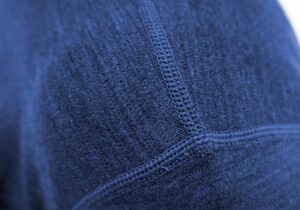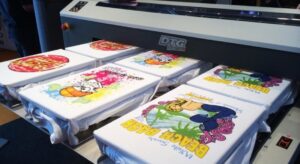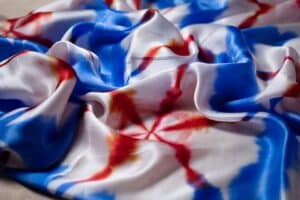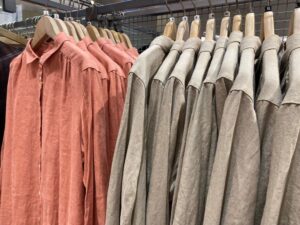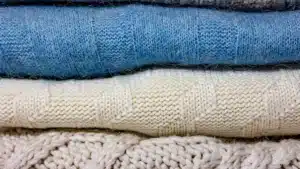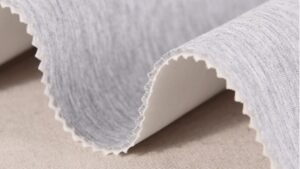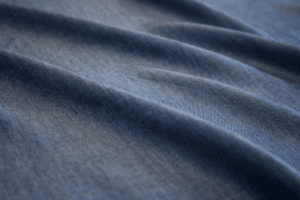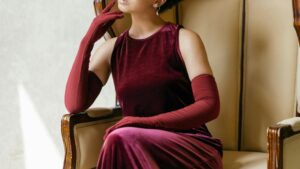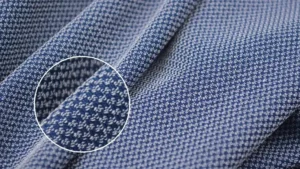
Chambray fabric is light and made with simple weaving. It mixes colored threads going one way with white threads the other way. This makes it soft and airy, great for hot days. You can use it for many things, like casual shirts or fancy home items. Chambray looks classic and works well for daily use. It is comfy and stylish, so people love it for clothes and home decor.
Key Takeaways
Chambray fabric is light and airy, perfect for hot weather clothes.
It has a special two-color look made by weaving colored and white threads together.
Chambray works for casual or fancy clothes and home items like curtains or tablecloths.
There are different kinds, like stretch or linen chambray, for different uses.
Taking care of it with gentle washing and air drying keeps it nice for a long time.
What is Chambray Fabric?
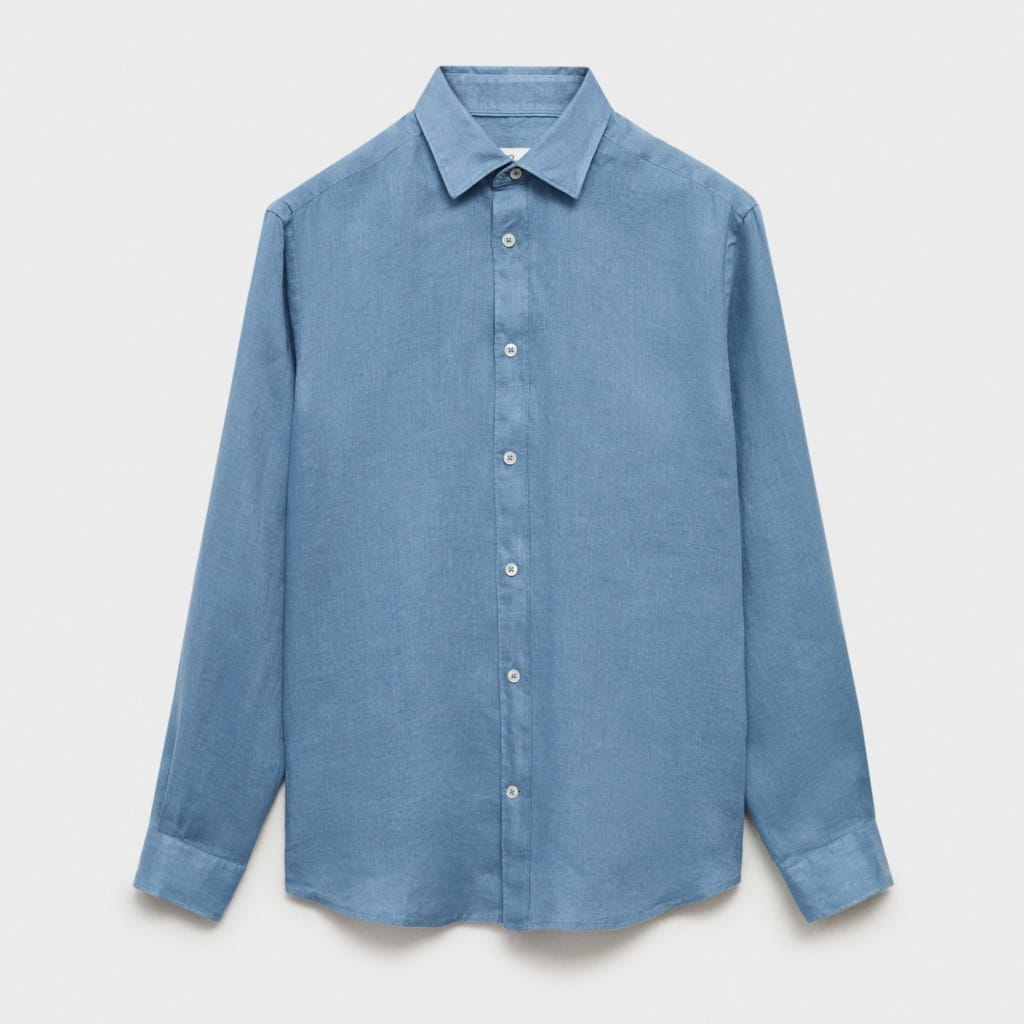
Chambray fabric has a long history and special way of being made. It is light and can be used for clothes or home items. To understand chambray, you need to know how it’s made, what it’s made of, and the types available.
How is Chambray Fabric Made
Making chambray fabric takes careful steps. First, cotton fibers are turned into yarn. The yarn is dyed, with vertical threads colored and horizontal threads left white. This gives chambray its two-tone look. The fabric is woven using a plain weave, where threads go over and under each other. This makes the fabric light and airy.
Manufacturers check the yarn tension and look for flaws during production. This ensures chambray is high quality and meets standards. Chambray is like denim but lighter and softer, making it unique.
Did you know? Chambray started in France and comes from the word 'cambric.' It has been around since 1530 and was linked to Cambrai, France. The English word 'chambray' appeared in the mid-1800s, showing its growth over time.
Composition and Weave
Chambray is mostly made from cotton, but some types have synthetic fibers for strength. Its plain weave gives it a smooth texture. Unlike denim’s twill weave, chambray’s plain weave makes it lighter and cooler. The mix of dyed and white threads creates its special two-tone look.
This makes chambray great for hot weather. It lets air pass through, keeping you cool. Its softness also makes it a favorite for both casual and dressy outfits.
Different Types of Chambray Fabric
Chambray comes in different kinds, each for specific uses. Here are some common ones:
Classic Chambray: Made from cotton, it’s light and breathable, great for shirts.
Stretch Chambray: Mixed with spandex, it stretches and works for fitted clothes.
Linen Chambray: Has linen fibers, making it rougher and stronger, good for curtains.
Synthetic Chambray: Includes polyester for fewer wrinkles and more durability, ideal for daily wear.
Each type of chambray is useful for different needs. Whether you want a soft shirt or a strong tablecloth, there’s a chambray for you.
Tip: Think about how you’ll use chambray before buying. For clothes, pick cotton or stretch chambray. For home items, linen or synthetic chambray is better.
Unique Characteristics of Chambray Fabric
Lightweight and Breathable
Chambray fabric is light and lets air pass through. Its plain weave helps air move, making it great for hot days. The cotton fibers soak up sweat, keeping you cool and dry. This makes chambray perfect for summer clothes like shirts and dresses. It feels like denim but is much lighter, so you stay comfy and stylish.
Chambray’s smooth texture makes it useful for clothes and home items. For example, it works well for curtains, letting light in while staying soft. Whether for sunny days or home decor, chambray is both useful and flexible.
Soft Yet Durable
Chambray is soft but also very strong. Its cotton fibers feel smooth and gentle on the skin. Even though it’s soft, it lasts a long time. The plain weave makes it tough enough for daily use.
This strength makes chambray great for many uses. It’s perfect for clothes you wear often since it handles washing well. It’s also good for home items like tablecloths and pillowcases. Chambray’s mix of softness and strength is why people love it for fashion and decor.
Distinctive Two-Tone Appearance
Chambray is easy to spot because of its two-tone look. This comes from weaving colored threads with white ones. Usually, the colored threads are blue, and the white ones go across. This creates a speckled or textured design. Here’s how it’s made:
Weaving Technique | What It Does |
|---|---|
Warp | Uses colored threads |
Weft | Uses white threads |
Look | Creates a speckled design |
This two-tone style makes chambray look unique and classic. It matches many colors and styles, making it very versatile. Whether for clothes or home decor, chambray’s timeless look always stays in fashion.
Difference Between Chambray and Denim
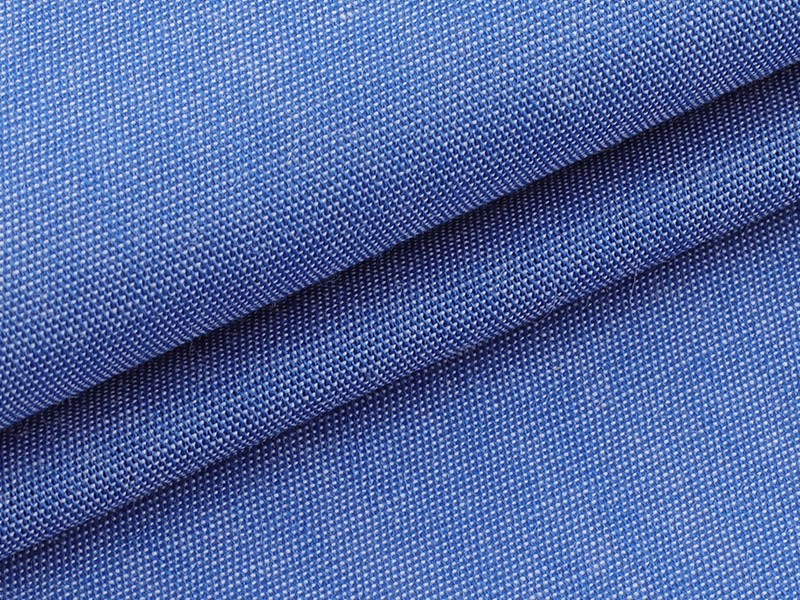
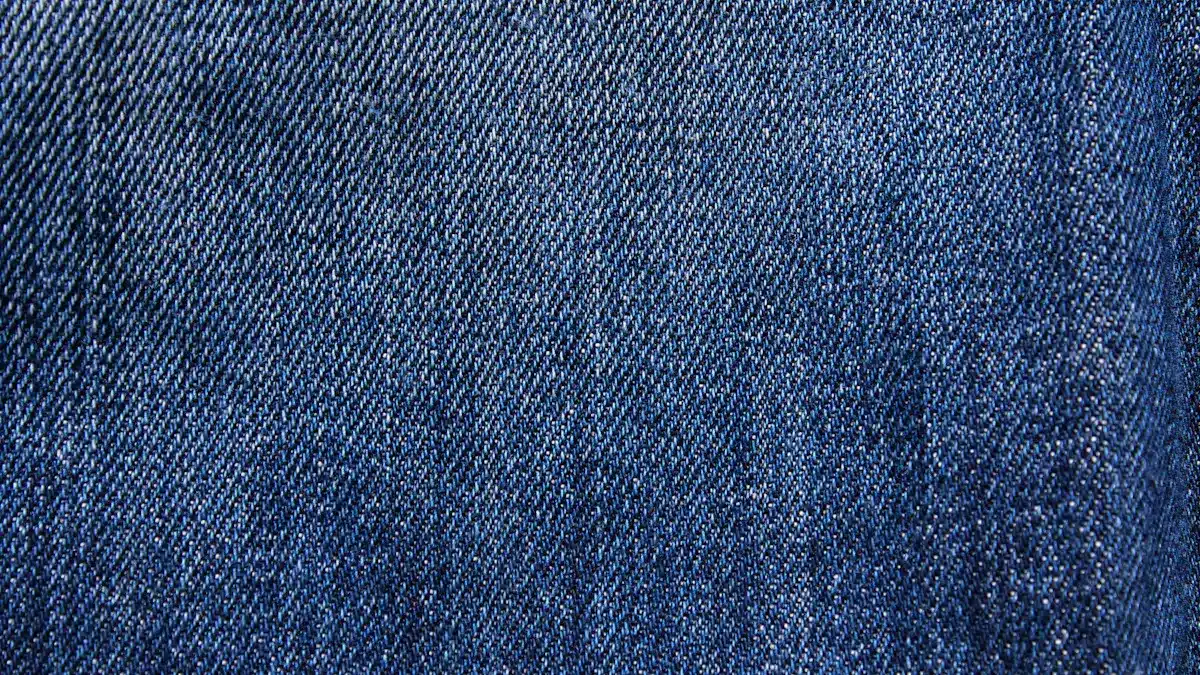
Chambray and denim might seem alike, but they are different. Knowing these differences helps you pick the right fabric for clothes or decor.
Weave and Texture
Chambray and denim are made with different weaving styles. Chambray uses a plain weave, where threads cross evenly over and under. This makes it smooth and light. Denim, however, has a twill weave, creating a diagonal, ribbed pattern. This makes denim thicker and rougher.
Chambray feels soft and comfy because of its plain weave. Denim feels stiffer and more structured due to its twill weave. If you want something breathable and smooth, chambray is better. For a rugged and casual look, denim works well.
Weight and Durability
Chambray is light and airy, great for hot weather. It keeps you cool and comfortable in summer. Denim is heavier and stronger, perfect for jeans and jackets. It can handle rough use and lasts longer.
Chambray is softer but less durable than denim. Denim’s thick weave makes it tough for outdoor wear. Chambray offers a lighter option with a denim-like style. Choose denim for hard-wearing items and chambray for warm-weather outfits.
Applications and Style
Chambray and denim are used for different things. Chambray is light and versatile, good for casual or dressy looks. It’s found in shirts, dresses, and home items like curtains. Its denim-like style adds a classic touch.
Denim is strong and mostly used for casual clothes. Jeans, jackets, and overalls are common denim items. Denim is too heavy for summer but great all year. Chambray is better for warm weather and has a softer, polished look.
Here’s a simple table comparing chambray and denim:
Feature | Chambray | Denim |
|---|---|---|
Weight | Light and breathable | Heavy and strong |
Weave | Plain weave | Twill weave |
Comfort | Soft and airy | Stiff and sturdy |
Best Season | Great for summer | Good all year |
Versatility | Works for casual and dressy | Mostly casual |
Durability | Less strong than denim | Very durable |
Wrinkle Resistance | Wrinkles easily | Resists wrinkles better |
Both fabrics are useful in their own ways. Chambray is comfy and stylish for warm days. Denim is tough and perfect for casual, everyday wear. Knowing these differences helps you choose the best fabric for your needs.
Uses of Chambray Fabric
Chambray fabric is loved for its many uses. It works well for both stylish clothes and useful home items. Let’s look at its most common uses.
Fashion (Shirts, Dresses, etc.)
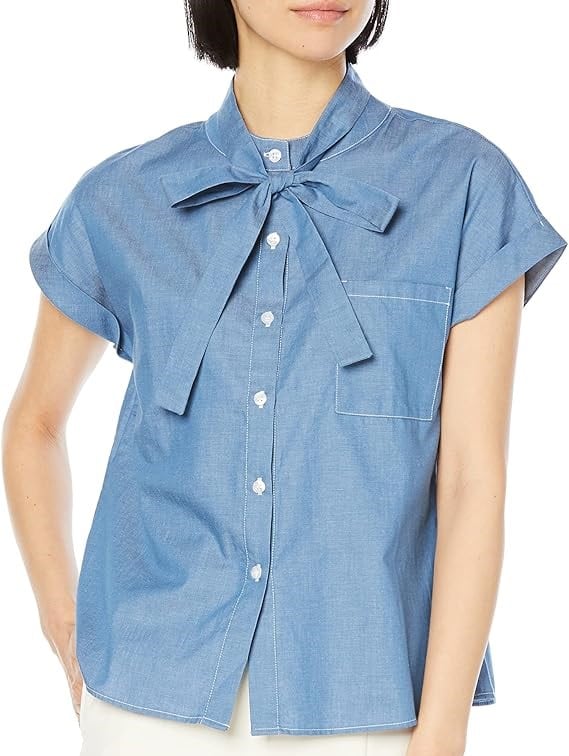
Chambray is popular for making clothes. It is light and airy, perfect for shirts, dresses, and t-shirts. People also use it for sportswear, pajamas, and undergarments because it feels soft. Chambray gives a neat but relaxed look, great for casual or work outfits.
Young people like chambray for its comfort and style. It keeps you cool and fashionable, especially in warm weather. Chambray clothes are a smart choice for staying comfy and trendy.
Here’s a simple table showing chambray’s fashion uses:
Use Type | Examples of Use |
|---|---|
Fashion | Shirts, dresses, blouses, sportswear, t-shirts, lightweight suits, jeans |
Home Decor (Curtains, Tablecloths, etc.)
Chambray is also great for decorating homes. Its soft but strong texture makes it good for curtains and tablecloths. For example, some designers use chambray to create elegant home items. Its cooling feel helps make rooms light and breezy.
If you want your home to look stylish, chambray is a great pick. Its two-tone design matches many styles, from modern to rustic.
Other Uses
Chambray is useful for more than just clothes and decor. Its cooling and breathable features make it great for sportswear. Many eco-friendly brands now use chambray made from recycled or organic cotton.
Chambray is versatile and practical. Whether you’re buying new clothes or redecorating, chambray is a timeless and smart choice.
Advantages and Disadvantages of Chambray Fabric
Advantages (Breathability, Versatility, etc.)
Chambray fabric has many benefits for clothes and home items. It is light and airy, letting air pass through easily. This makes it great to wear on hot days. The fabric also absorbs sweat, keeping you dry in humid weather. Its breathability and strength make it perfect for summer outfits.
Chambray is very flexible and works for many styles. It fits both casual and formal looks. For example, chambray shirts look neat but relaxed. Dresses made from organic chambray feel soft and fancy. It’s also great for home decor, adding style to curtains and tablecloths.
Chambray is affordable and eco-friendly too. Many companies use it for uniforms because it’s comfy and professional. It lasts through many washes, so you don’t need to replace it often. Eco-friendly chambray, made from recycled or organic fibers, is even better for the planet.
Main advantages of chambray fabric:
Light and breathable, perfect for warm weather.
Soft and comfy to wear.
Strong enough for regular washing.
Works for many styles and climates.
Eco-friendly options support the environment.
Disadvantages (Wrinkling, Maintenance, etc.)
Chambray fabric does have some downsides. It wrinkles easily, which can make it hard to keep neat. You might need to iron it often, especially for formal clothes.
It also needs careful washing to stay in good shape. While it’s strong, washing or drying it the wrong way can damage it. For example, drying it on high heat might shrink or weaken the fabric. Eco-friendly chambray may need even gentler care to last longer.
Another issue is that chambray is thin and not warm enough for cold weather. It’s best for summer but doesn’t work well in winter unless you layer it with other clothes.
Common disadvantages of chambray fabric:
Wrinkles a lot, so it needs ironing.
Needs gentle care during washing and drying.
Too light for cold weather without layering.
Knowing the pros and cons of chambray helps you decide if it’s right for your wardrobe or home.
How to Maintain and Care for Chambray Fabric
Taking care of chambray fabric helps it last longer. Follow these simple tips to keep it looking good.
Washing and Drying Tips
Wash chambray gently to keep it soft and colorful. Use cold water and mild soap to avoid fading. Don’t use bleach, as it can harm the fabric. Turn chambray clothes inside out to protect the outer surface.
Air drying is the best option. Lay it flat or hang it to dry to prevent shrinking. If you use a dryer, pick a low-heat setting. High heat can shrink or damage the fabric. Always check the care label for washing and drying instructions.
Tip: Wash new chambray items alone at first to stop color bleeding.
Ironing and Storage Advice
Iron chambray to keep it smooth and neat. Use medium heat and iron when the fabric is slightly damp. If it’s dry, spray it lightly with water before ironing.
Store chambray in a cool, dry spot. Fold it neatly to avoid wrinkles, or hang it on padded hangers to keep its shape. Don’t overcrowd your closet, as this can cause creases or damage.
How to Identify Quality Chambray
Good chambray feels smooth and has an even weave. High-quality chambray is soft but strong. If buying clothes, check the stitching. Tight, neat stitches mean better quality.
Look at the fabric’s weight. Light chambray is great for summer clothes, while heavier types are better for home items. Check the color too. A rich, even tone with the two-tone look shows good quality.
Note: Buying chambray from trusted brands ensures it’s durable and stylish.
Chambray fabric is loved for its mix of style and comfort. It’s light and breathable, making it perfect for hot weather. Its soft feel adds extra comfort, while its strength makes it last through frequent use. Chambray works well for both casual and formal looks, giving it a classic and timeless charm.
Here’s a simple breakdown of why chambray is popular:
Feature | Explanation |
|---|---|
Breathable | Light fabric lets air flow, great for warm days. |
Soft | Smooth texture feels gentle and comfy on skin. |
Strong | Durable fabric handles regular washing and wear easily. |
Flexible Style | Fits casual outfits and dressy occasions perfectly. |
Unique Look | Two-tone design with colored and white threads, similar to denim. |
Easy to Work With | Simple to cut and sew, good for beginners and experts. |
Keeps Color | Stays bright even after many washes. |
Cotton-Based | Made from natural fibers, safe for sensitive skin. |
Simple Care | Easy to wash and dry without much effort. |
Choosing chambray means picking a fabric that’s stylish and practical. Whether for clothes or home items, it’s a dependable and elegant choice that stays fashionable.
FAQ
How is chambray different from denim?
Chambray is lighter and smoother because of its plain weave. Denim, with its twill weave, is thicker and tougher. Chambray is soft and airy, great for hot days. Denim works better for strong clothes like jeans and jackets.
Can chambray shrink when washed?
Yes, chambray might shrink if washed in hot water or dried on high heat. To avoid this, use cold water and air dry or choose low heat. Always read the care label to keep its size and quality.
Tip: Wash chambray before sewing or wearing to stop shrinking surprises.
Is chambray good for winter wear?
Chambray is light and breathable, so it’s best for summer. It doesn’t keep you warm by itself. But you can wear it with sweaters or jackets in cooler weather to stay comfy and stylish.
How can I get wrinkles out of chambray?
Iron chambray on medium heat while it’s a bit damp. If it’s dry, spray it lightly with water first. A steamer also works well for quick wrinkle fixes. Hanging chambray helps prevent wrinkles over time.
Is chambray environmentally friendly?
Chambray made from organic or recycled cotton is eco-friendly. It uses natural fibers that are safe and biodegradable. Choosing sustainable chambray helps the planet and lowers your carbon footprint.
Note: Check for labels like GOTS (Global Organic Textile Standard) to ensure eco-friendly chambray.


